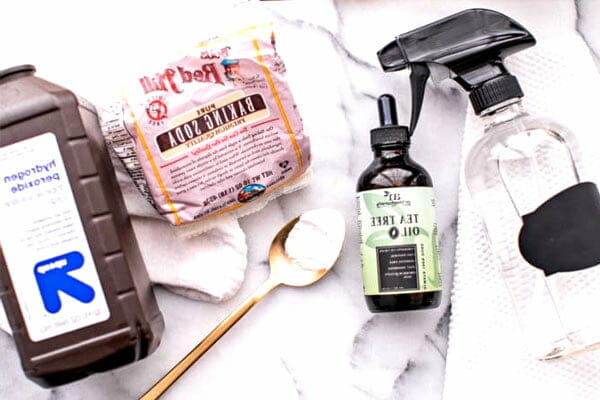Professional mold remediation or removal is a process that frequently requires the use of specialized tools, chemicals, and testing techniques, underscoring its high degree of specialization.
Before you engage mold removal professionals there are a few things you should be aware of. The average costs of mold removal, the process of mold testing, and the different types of mold removal are all important considerations in choosing the right mold removal company for you.
What we cover
ToggleHow much does mold removal normally cost?
While there is no one size fits all approach to the costs of your mold removal, and the final price will depend on your individual circumstances, the average cost of mold removal sits between $1,100 and $3,300. Mold removal companies will usually charge between $10 and $25 per square foot.
As such, the most obvious factor that impacts the cost of your mold removal is the size and location of your home mold growth. If the mold in question is relatively small, and growing in an open area, the cost of removing this mold can be as little as $500.
Areas in your property that typically fit this description are bathrooms or laundries.
Average mold removal prices
| Service | Quantity | Low | High |
|---|---|---|---|
| Mold removal cost | Per sq. ft. | $8 | $25 |
| Basement mold removal cost | Per sq. ft. | $10 | $30 |
| Attic mold removal cost | Per sq. ft. | $9 | $25 |
| Bathroom mold removal cost | Per sq. ft. | $7 | $18 |
| Mold removal labor cost | Per Hour | $50 | $95 |
| Mold removal materials | Total | $85 | $300 |
| Average per square foot | $15.50 | ||
| Average project total | $750 | ||
Average Estimate: $ 750
Heavy mold/ large surface area
However, if the mold growth is larger and in an area that is more difficult to gain access to, you can expect this cost to go up – sometimes quite significantly!
For example, if you have a significant mold growth in your attic that has been caused by a leaky roof, you could pay up to $8,500. Mold growths of this nature are typically harder to treat and remove for a variety of reasons, all of which drive up the cost of your mold removal.
Factors which add to cost of mold removal
There are other factors that might impact the cost of your mold removal. These include:
- Where you live
- Age of your house
- Type of mold
- Location of mold
- Surface area covered
Toxic black mold is considered to be particularly dangerous and may require special chemicals or equipment to remove, and mildew tends to stain whatever surfaces it has been growing on and may require additional treatment.
How to choose the right mold cleaning company
When it comes to choosing a mold cleaning company, one of the most important things you can do is check the licensing requirements for home mold removal and cleaning companies in your state. Each state will have different requirements, so you should make yourself familiar with the requirements of your home state.
Mold removal scams, although not common, do exist. These prey on fears about health and safety and take advantage of people who have not acquainted themselves with the basics and principles of professional mold removal.
Some of the more common indicators of a mold removal scam include:
- The mold removal company only performed a visual inspection.
- The mold removal company informed you that you have toxic black mold in your home without performing a laboratory test.
- The mold removal company demanded a large upfront payment.
- The mold removal company did not present any certifications or licenses.
By remaining vigilant and keeping yourself informed, you can easily avoid mold removal scams that seek to prey on your fears about home mold.
Should mold remediation companies be accredited?
Licensing and accreditation requirements differ state by state, and some states do not require mold removal or remediation companies to hold any licenses at all.
Despite these disparate requirements, there are several pieces of training and accreditations available for mold remediation companies nationwide.
The National Organization of Remediators and Mold Inspectors offers several certifications
and training. These range from more generic accreditations, such as a certification for mold assessors or training for environmental consultants, to more specific, specialized certifications, such as certifications in drywall assessment and remediation, or in biocide application.
The Institute of Inspection Cleaning and Restoration Certification has also developed a standalone certification for professional mold remediators. This wide-ranging certification, known as the Mold Removal Specialist certification, endorses mold remediators who successfully complete the course across a wide range of skills and capabilities. These include mold remediation for buildings and contents, containment protocols, principles of health and safety, and comprehensive knowledge of legal protocols and other relevant legislation.
Should I get a mold testing company in before beginning remediation?

Many mold remediation companies will have the ability and resources to perform mold testing for you. This testing will form part of their quote and final costs.
The Environmental Protection Agency states that there is generally no need for testing or sampling mold if growths are visible in your home. If you have visible home mold growths, you should make efforts to have them removed as soon as possible.
If you do wish to perform mold testing, then ensure the company you are using is able to adhere to the relevant industrial hygiene guidelines when it comes to collecting and testing mold samples.
Interestingly, it may be more useful to perform a mold test after remediation has been conducted. This test will confirm if the mold spores have been adequately cleaned and removed.
Is there any difference between local mold removal companies and remediation companies?
The terms ‘mold removal’ and ‘mold remediation’ are often used interchangeably, and are taken by many to be one and the same.
While there may be nothing wrong with using either of these terms as a catch-all for the process of mold remediation, the term ‘mold removal’ can be somewhat misleading.
Mold is everywhere. As well as being a vital part of many biological processes that we often take for granted, such as the breaking down of organic matter, mold is simply a fact of your everyday life. In fact, it is very likely that you breathe in some mold spores every single day!
As such, it is impossible to completely remove mold. Any company that sells itself to you, claiming to do just that, is very likely to be misleading you. Instead of removing all mold in your home, professional, reputable companies will remediate the mold in your home.
So what’s the difference?
Mold remediation is the treatment of moldy areas in a property, with the aim of containing and sanitizing excessive mold growth. This can be done in a number of ways, but usually involves the use of specialist biocides and equipment.
The only instances in which ‘removal’ becomes part of the mold remediation process is when mold remediators need to remove unsalvageable objects that are far too riddled with mold to be successfully remediated.
What does “mold abatement” mean?
By definition, abatement means the reduction, removal, alleviation, or mitigation of something. In the case of mold abatement, this refers to the reduction of mold growth.
As already established, the complete removal of mold from any property is impossible. As such, mold abatement is another term that can be used interchangeably with mold remediation.
What is the mold removal process?
While the exact process for mold removal will depend on a few factors, such as the size of the mold growth, the type of mold growth, and the location of the mold growth, there are a few elements common to all mold remediation projects.
Firstly, your professional mold remediator will identify the source of your mold growth, which is usually underlying dampness or moisture issue. Whether this is a leaky roof, a burst pipe, or a flooded basement, identifying the source of your mold issue is one of the most important steps in the remediation process.
If you do not address and fix the underlying moisture issue, it is highly likely that you will experience constant, recurring mold growths in the same area.
Secondly, your mold remediation specialist will contain the mold growth. Whether through the use of containment sprays, or the erection of polyethylene sheeting, there are multiple ways to ensure your mold growth is safely and effectively contained. As well as providing protection for anyone working or living on your property, this also helps stop the further spread of mold spores.
Thirdly, the mold remediation process will then commence. This process can take several forms depending on the individual circumstances, but usually involves the complete drying of the area in question, and the cleaning and sanitization of the mold through the use of specialized equipment and chemicals.
Finally, your mold remediators will commence the removal and disposal of any mold-infested materials that can not be remediated. This could include drywall or carpets, which can become infected and overgrown with mold. The remediators will also dispose of any other products or items that were used during the remediation process, including personal protective equipment or containment devices.
What chemicals are used during mold remediation?
The chemicals that will be used during your mold remediation will depend upon the location and size of the mold growth, as well as the substance or surface it is growing on. For example, the chemicals used to remove mold from delicate items such as books or leathergoods are very different from the chemicals used to remove from drywall or tiled surfaces.
As well as high strength commercial bleaches and cleaners, the chemicals used during mold remediation will have antimicrobial properties, which will help prevent the regrowth of any mold.
Additionally, professional mold remediators will make use of high-grade equipment that is crucial to the safe, effective, and long-term remediation of home mold. This equipment can include High-Efficiency Particulate Air (HEPA) air scrubbers, HEPA vacuums, and commercial-strength dehumidifiers.
The use of these HEPA filters is crucial to the remediation process. As mold growths spread through mold spores, which are microscopic, your remediator will need to ensure that the air in your property does not have an excessive mold spore count. A HEPA filter is the only type of filter that is able to effectively and efficiently capture these tiny mold spores.
Can I ask for non-toxic alternatives?

If you are concerned about the use of harsh chemicals such as bleach in your home, and your mold growth is relatively small (less than 3 feet by 3 feet), you may be able to remove some of the molds yourself using natural ingredients.
Substances such as baking soda, vinegar, and hydrogen peroxide can be effective in reducing mold if used correctly. However, they are unlikely to have the same, lasting effect as the proper, commercial-grade chemicals and cleaners used by professional mold remediators.
Mold remediators will not use these ‘natural solutions’ when combating home mold, especially when it comes to difficult mold types such as black mold and mildew. However, as your professional mold remediators are specialists in their field, you can rest assured that they will use any chemicals and cleaners in the safest, most responsible manner to keep you and your home safe and clean.













